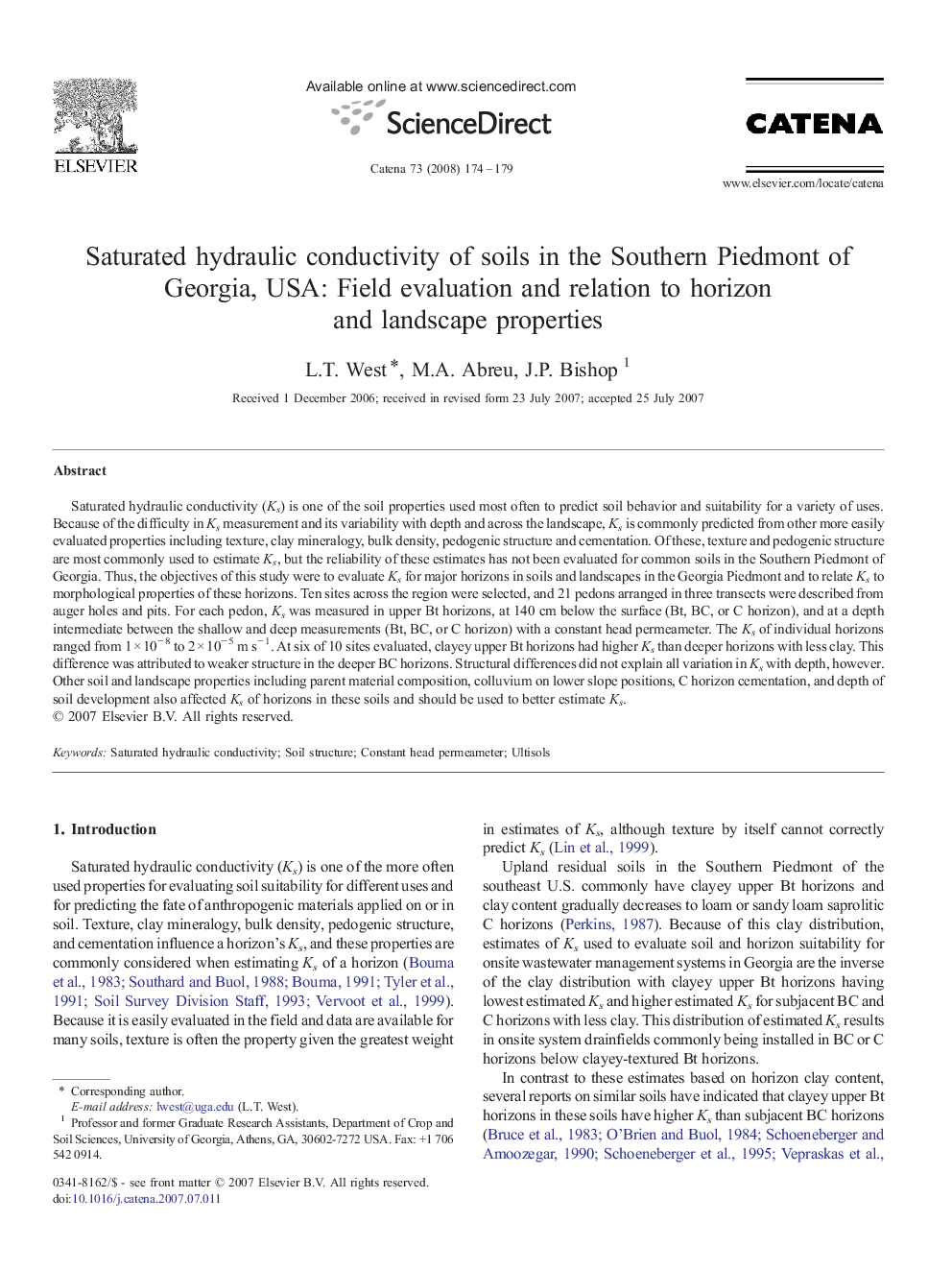| Article ID | Journal | Published Year | Pages | File Type |
|---|---|---|---|---|
| 4572452 | CATENA | 2008 | 6 Pages |
Saturated hydraulic conductivity (Ks) is one of the soil properties used most often to predict soil behavior and suitability for a variety of uses. Because of the difficulty in Ks measurement and its variability with depth and across the landscape, Ks is commonly predicted from other more easily evaluated properties including texture, clay mineralogy, bulk density, pedogenic structure and cementation. Of these, texture and pedogenic structure are most commonly used to estimate Ks, but the reliability of these estimates has not been evaluated for common soils in the Southern Piedmont of Georgia. Thus, the objectives of this study were to evaluate Ks for major horizons in soils and landscapes in the Georgia Piedmont and to relate Ks to morphological properties of these horizons. Ten sites across the region were selected, and 21 pedons arranged in three transects were described from auger holes and pits. For each pedon, Ks was measured in upper Bt horizons, at 140 cm below the surface (Bt, BC, or C horizon), and at a depth intermediate between the shallow and deep measurements (Bt, BC, or C horizon) with a constant head permeameter. The Ks of individual horizons ranged from 1 × 10− 8 to 2 × 10− 5 m s− 1. At six of 10 sites evaluated, clayey upper Bt horizons had higher Ks than deeper horizons with less clay. This difference was attributed to weaker structure in the deeper BC horizons. Structural differences did not explain all variation in Ks with depth, however. Other soil and landscape properties including parent material composition, colluvium on lower slope positions, C horizon cementation, and depth of soil development also affected Ks of horizons in these soils and should be used to better estimate Ks.
